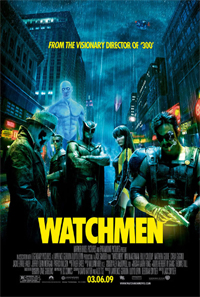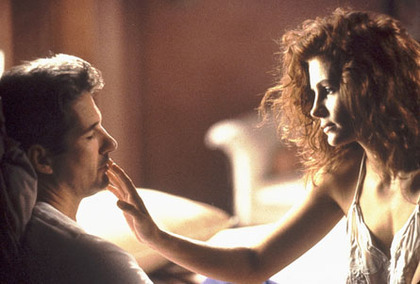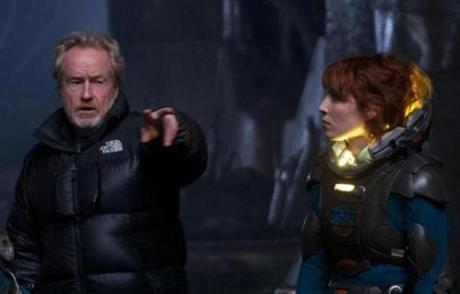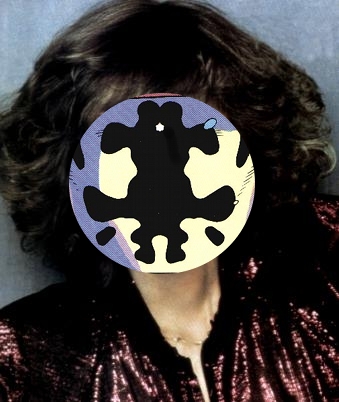Being John Malkovich is an almost certainly intentional, not to mention deliberately parodic, riff on film theory. As I am not the first to point out, the movie gleefully presents the viewer with mirror images, women who want the phallus, explicit sadistic fantasies of control, identification with the gaze, identification through the gaze, and a chimpanzee with a traumatic backstory —all couched in an absurdist narrative. At one point we even get a tour through John Malkovich’s subconscious which begins (of course) with a primal scene as young John watches his parents do that thing that Freudian parents do.
It’s pretty clear that writer Charlie Kaufmann and director Spike Jonze are both referencing and undermining Laura Mulvey’s gaze theory. On the one hand, Craig Schwartz, the protagonist, is the protoypical sadistic viewer — he is a puppeteer by profession, and he explains at some length how he loves to get inside other people, to enter their skin and feel what they feel. This speech is made by Craig to Maxine, a woman with whom he is sexually obsessed — and soon thereafter he makes a puppet of her to play with, so the fetishistic content is not exactly subtle. Craig wants to enter others as a way of fucking others; empathy and identification are for him a means of sadistic control.
At the same time, the film messes with Mulvey’s formulation, in which the male viewer is supposed to be the subject of the gaze and a female character is supposed to be the object. For instance, the person Craig inhabits and controls is not a woman, but a man, John Malkovich. In the movie’s main absurdist conceit, Craig finds a secret, moist tunnel in his office which literally leads into Malkovich’s consciousness. This not only feminizes Malkovich (the tunnel is literally referred to as Malkovich’s “cunt” at one point) but it also feminizes Craig. In the first place, he’s engaged in male-male sex too; Maxine calls him a “fag.” And furthermore, towards the end of the film he essentially experiences a full-body castration, giving up his own life and self in order to inhabit and become Malkovich.
The film also critiques/parodies Mulvey by handing the male gaze over to a woman. Craig’s wife, Lottie, also uses the tunnel into Malkovich’s head — and she finds the experience both exciting and sexually stimulating. Indeed, after entering Malkovich while he’s taking a shower, desire and identification flip, and she decides she wants to be a man. Later, she goes into Malkovich again, and rides along as he receives a sexually charged phone call from Max…with whom both Lottie and in consequence Malkovich instantly fall in lust. The sadistic male gaze, therefore, becomes a sadistic female gaze, giving women access to the phallus and (not coincidentally) to objectification of other women.
The point is further driven home (if that’s the right metaphor) by the fact that Max reciprocates Lottie’s affections — but only when Lottie is in Malkovich. Malkovich is the phallus himself, but he cannot have the phallus — just as is supposed to be the case for women in Lacan. Actual women, on the other hand, can hold the phallus and wield it for their own pleasure — the only caveat being that to hold the phallus they have to hold the phallus. Masculinity and mastery, contradictorily, seem to inhere, not in men, but in women. Even paternity becomes a female prerogative — Max becomes pregnant when Lottie is in Malkovich, not when Craig is. Lesbians, it seems, are better men than men are.
The film, then, in some ways seems to deliberately mock masculinity — or at least, Mulvey’s formulation of masculinity. In other ways, though, its position is less clear. In particular, it seems significant that Malkovich’s castration is in many ways actually a kind of apotheosis. Malkovich is, after all, famous for being other people. The film, then, becomes an extended allegory of his talent; Malkovich is everyone, and everyone is Malkovich. The very funny scene in which Malkovich goes through the passageway into his own head and ends up in a restaurant where he is literally all the people in the room, whether women, dwarfs, waiters or patrons, definitely ridicules his persona. But it also elevates that persona into existential dilemma. Similarly, Malkovich’s vituoso performance as Craig inhabiting John Malkovich becomes the ultimate version of disappearing into a role. No costume, no props, and yet he is magically (and convincingly) doing a quadruple-layered acting feat, playing John Cusack playing Craig playing John Malkovich playing John Malkovich. This is in part about Lacanian misrecognition, where even your self is someone other than your self. But it’s also about method acting. To not be who you are may be a traumatic crisis of selfhood, but it’s also, as an actor, the mark of mastery. The more castrated Malkovich is, the more his phallus grows.
The same is true of Craig. Early on we see Craig performing a puppet show of Abelard and Heloise. Abelard was, famously, castrated. In the puppet show, however, his incapacity is supplemented, or superseded, by Heloise’s insistent sexuality — the puppet humps the wall between her cell and Abelard’s. The blatant display, performed by Craig on a street corner, is so convincing it prompts an irate father to hit him in the face. Craig is castrated like Abelard…but like Malkovich, his belittlement becomes the sign of his mastery. And that mastery is routed through the inhabitation of female desire.
Which raises the question…is the lesbian relationship in the film a rebuke to male fantasies of possession? Or is it an embodiment of them? At one point, Craig enters Malkovich when Maxine thinks Lottie is inside; as a result he weirdly gets to have lesbian sex — a not at all uncommon male fantasy. At the film’s conclusion, Craig is presented as trapped in the consciousness of Lottie and Maxine’s child, staring out impotently forever at the two women he can never have. Again, though, the masochism is perhaps just a little too convenient. Are we really supposed to believe he is not getting off on this fantasy of being inside a woman — and, more, inside the sexual relationship of two women? Who is pulling whose strings, exactly?
In one of his puppet plays, Craig’s doll (made in his own image) looks up deliberately, as if seeing the man who controls him. Being John Malkovich, too, with its absurdist, self-referential plot constantly reminds the viewer of its status as fiction — and of its status as tour-de-force. Writer Charlie Kaufman’s script is as auteurish as Malkovich’s performance, and in the same way. When Malkovich and Kaufman erase and feminize themselves, it is only so that they can be all-the-more controllingly present, all-the-more wielders of the phallus. Masochistic lesbophilia seems, from this perspective not so much an upending of patriarchy as it is a means of creating a more all-encompassing phallic order. Perhaps that’s why there is, running through the film, an air of smug, over-determined self-congratulation. Despite its cleverness, and its deliberate eschewal of traditional storytelling, it still comes across as surprisingly conventional Hollywood narrative cinema, less problematic for Mulvey’s theories than any B-movie slasher.
______________
As a brief addendum, I just saw Eternal Sunshine of the Spotless Mind, which painfully confirms my sense that Kaufman’s absurdist trickery conceals all-too-typical masculine self-pity and predictable Hollywood idiocy. The film’s heroine/love object Clementine claims several times that she’s not just a cipher for male desire and dreams, but again alas the fact that she’s a self conscious magic pixie dream girl doesn’t make her less of a magic pixie dream girl — quite the contrary, in fact. Maybe if there were some vague effort to balance the amount of time we had in our drab hero Joel’s head with the amount of time in bouncy, unpredictable Clementine’s I’d believe that the film saw her as her own person. But virtually all her screen time occurs either when she’s with Joel or when she’s not even herself, but is instead (and significantly) a mental projection inside his head. And, of course, we’ve got not one, but two romances in which Hollywood-hot younger actresses turn down attractive men their own age in order to aggressively seduce significantly older, character-actor-homely men. The PKD meditation on memory and self looks a lot like a feint to distract from the puerile, self-serving wish-fulfillment.
Is there any similar quirky, high-concept, mainstream American film that is told primarily from the point of view of a woman? There may well be. Chalie Kaufman sure isn’t going to write it, though.








